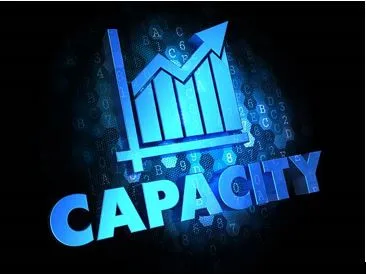Quantifying Capacity: Using Scenario Planning Software to Navigate the Resource Management Gap
In today’s fast-paced and ever-changing business environment, accurately quantifying capacity has become a cornerstone of effective resource management. Companies across industries face a persistent challenge: how to balance current resources with future demand, all while navigating uncertainties that could disrupt even the best-laid plans. This is where scenario planning software emerges as a critical tool, enabling organizations to simulate, analyze, and adapt their resource strategies before making costly commitments.
Resource management gaps—situations where available capacity fails to meet demand—can derail projects, inflate costs, and erode customer satisfaction. By quantifying capacity in a precise and dynamic manner, businesses can identify these gaps early, adjust plans proactively, and allocate resources more effectively. This blog post explores how scenario planning software plays a pivotal role in closing the resource management gap through quantification, foresight, and agility.
The Resource Management Gap: A Persistent Challenge
Resource management is more than just assigning tasks or tracking employee hours. It involves understanding the interplay between workforce capacity, equipment availability, budget constraints, and project timelines. The resource management gap often emerges when there is a mismatch between what is needed and what is available—whether that be personnel, machinery, or financial resources.
Traditional resource planning methods tend to rely on static spreadsheets, historical data, or intuition. These approaches struggle to account for variability, such as sudden changes in project scope, supply chain disruptions, or shifting market demands. As a result, organizations either over-allocate resources (leading to wasted capacity and inflated costs) or under-allocate (resulting in missed deadlines and burnout).
The fundamental issue is a lack of precise quantification and forward-looking insight into capacity. Businesses need tools that can model multiple possible futures, incorporating uncertainties and assumptions to reveal hidden risks and opportunities.
Why Quantifying Capacity Matters
Capacity quantification is about translating abstract resource data into actionable insights. It involves measuring the true availability and capability of resources against current and projected demands. By quantifying capacity, managers can:
- Identify bottlenecks early: Understand where capacity constraints might hinder progress.
- Optimize resource utilization: Maximize the efficiency of available assets without overburdening them.
- Plan for growth or contraction: Adjust capacity projections based on different business scenarios.
- Enhance decision-making: Make informed trade-offs between resource allocation and project priorities.
Without accurate quantification, decisions are reactive rather than strategic. This often results in firefighting, missed targets, and eroded stakeholder confidence.
The Role of Scenario Planning Software
This is where scenario planning software becomes invaluable. Unlike traditional tools, scenario planning software allows organizations to build dynamic models that simulate a wide range of resource management scenarios. These platforms incorporate data inputs such as workforce skills, project timelines, equipment availability, and financial budgets to create a comprehensive picture of capacity.
The key advantages of using scenario planning software include:
- Multiple scenario simulation: Instead of relying on a single forecast, users can test various “what-if” scenarios to understand how changes in demand, resources, or external conditions might impact capacity.
- Risk mitigation: By exploring potential disruptions (e.g., supplier delays, workforce attrition), businesses can develop contingency plans to avoid resource shortfalls.
- Real-time updates: Modern software integrates with enterprise systems to reflect real-time data, ensuring that capacity plans remain relevant as conditions evolve.
- Collaborative planning: Teams across departments can input data, review scenarios, and align strategies, fostering transparency and consensus.
By quantifying capacity through these simulations, organizations gain the foresight needed to bridge the resource management gap proactively.
Practical Applications of Scenario Planning Software in Resource Management
Let’s look at how scenario planning software is used across different industries to quantify capacity and address resource gaps:
- Manufacturing: Production managers use scenario planning to simulate shifts in demand, machine downtime, and workforce availability. This helps optimize production schedules, avoid bottlenecks, and reduce costly overtime.
- IT and Software Development: Project managers forecast resource needs across multiple projects, balancing developer skills and timelines. Scenario planning highlights when hiring or training is necessary to prevent delays.
- Healthcare: Hospitals model patient inflow scenarios to ensure adequate staffing, equipment, and bed capacity, especially during peak times like flu seasons or emergencies.
- Construction: Project teams analyze resource allocation across simultaneous builds, accounting for weather delays or supply chain issues to keep projects on track.
In each case, the ability to quantify capacity through scenario planning reduces uncertainty and empowers more strategic resource decisions.
Overcoming Barriers to Effective Capacity Quantification
While the benefits of scenario planning software are clear, some organizations face challenges in adopting these tools effectively:
- Data quality and integration: Accurate quantification depends on reliable data from diverse sources. Ensuring seamless integration with HR, ERP, and project management systems is crucial.
- Change management: Shifting from traditional planning methods to scenario-based approaches requires cultural buy-in and training.
- Complexity: Advanced scenario planning platforms can be complex to set up and interpret, so investing in skilled analysts or consultants is often necessary.
Despite these hurdles, the long-term gains in capacity visibility, risk mitigation, and resource optimization make scenario planning software a worthwhile investment.
The Future of Capacity Quantification
As technologies like AI and machine learning become more integrated into scenario planning software, capacity quantification will become even more precise and adaptive. Predictive analytics will forecast not only resource availability but also emerging market trends and workforce sentiment. This evolution will enable businesses to maintain a continuous feedback loop—quantifying capacity, planning scenarios, implementing decisions, and refining strategies in real time.
Conclusion
Quantifying capacity is no longer a luxury but a necessity for organizations striving to navigate the resource management gap effectively. By leveraging scenario planning software, businesses can transform abstract data into actionable foresight, simulating multiple futures and making strategic decisions grounded in reality. This empowers organizations to optimize resources, mitigate risks, and ultimately achieve their project and business goals with confidence.
In a world marked by uncertainty and complexity, scenario planning software offers the clarity and flexibility that resource managers need to stay ahead. If your organization is still relying on static plans and guesswork, it’s time to embrace scenario planning as a core component of capacity management and resource optimization.





